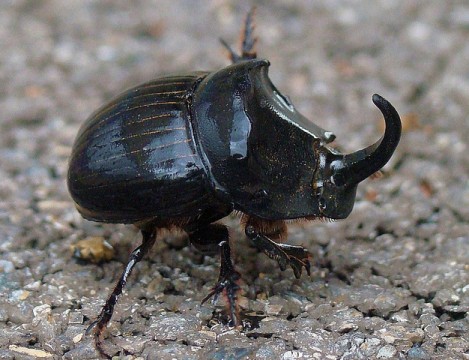Unfinished business
Blogger: Forest & Bird’s Web Manager, Mandy Herrick
A hard-working troop of exotic dung beetles are due to be unleashed on our farms in the coming months to reduce our growing bovine sewage problem.
These beetles have co-evolved over millions of years to live with mammals like cattle and sheep – and use their dung as a feeding and breeding ground.
It is expected they’ll make quick work of the cow pats and help to return the nitrates and phosphates back into the soil.
At first glance, these beetles seem like biological wonder-workers.
They’ll help to clean up effluent, improve soil health and drainage, help to store organic carbon underground and (hopefully) reduce parasites, such as intestinal worms.
Our farmers will eventually reduce their reliance on chemical fertiliser inputs because the dung beetles will be transferring these nitrates back into the soil.
We now have nearly 10 million bovine citizens in production a year in NZ producing 570-950ha of dung a day, so importing some dung beetles (to many farmers) seems long overdue.
Cow dung alone is responsible for 14 per cent of our nitrous oxide emissions and large amounts of it limits areas of grazable land – the area around each dung pat is colloquially called the ‘zone of repugnance’.
Already a number of countries have successfully introduced dung-beetles, such as Brazil, Australia, U.S ( incl Hawai’i), and Canada.
Since the late 1960s, Australia has imported a range of dung beetles to deal with its manure problem – a problem that saw eateries in the 1960s demand that diners eat in a fly-proof zone.
Since then, twenty three types of immigrant dung beetles have taken to life in Australia and make quick work of recycling the dung back into the ground by consuming fresh pats within 48 hours flat.
Eleven types of these dung beetles from Australia which originally hailed from South Africa and Southern Europe will be introduced to New Zealand.
As the key scientist at the Dung Beetle Release Strategy Group (DBRSG), Shaun Forgie is chief spokesperson, project manager and mid-wife to this new era of sustainable-farming.
Forgie – who has worked on dung beetles since 1994 – says the DBRSG selected this array of dung beetles because they believe they will acclimatise easily to our soil habitat & climate.
The groups wants them working throughout the year, in all parts of the country, so they’ve also handpicked a bunch that prefer different climates and are active during different seasons.
Two species of Australian dung beetle were accidentally introduced here in the 1840s and a Mexican variety was imported in the 1950s to control dung breeding flies among other reasons – however these beetles are either too small, not abundant enough or poorly adapted to be of great benefit.
He says the Mexican beetles were probably introduced on an ad hoc basis and are at the bottom of any farmer’s shopping list for dung removal.
Although the proposal has been approved by our regulatory agency that oversees the import of new organisms – ERMA – it received over 37 submissions some of which opposed the rushed introduction of these new critters.
Auckland Council, DOC and Auckland University were just some of the submitters that felt that we should take a more precautionary approach given our somewhat disastrous history of introductions.
Their concerns lay largely with the rushed nature of the proposal and a limited risk assessment of its effect on our 16 native dung beetles.
Entomologist Jacqueline Beggs who is behind Auckland University’s submission, says the dung beetles in New Zealand have largely been untouched by science, so we can’t predict the outcome of introducing new ones.
She – like others – is concerned that the foreign dung beetles could roam into forest verges and effectively push our native dung beetles out.
Or that they could irrevocably alter the structure and nature of fragile high-country soils. Rather than introducing a whole new swathe of beetles, Beggs believes that we should have carefully monitor our existing array of cow-pat eating dung beetles.
Forgie says many of our past introductions were not done by scientists, and more often than not did not go through correct environmental risk management processes.
The scientists in the DBRSG (response attached) argue that forests, forest fragments or high country tussock-lands are not covered in enough dung to sustain a population of these dung-hungry beetles – even if it does contain the odd sheep, pig, wild horse or deer dropping.
The exotic species evolved specifically in open grassland habitat, and evolved to feed on the dung of large herbivorous mammals – animals that are absent from NZ’s native fauna throughout most if not all of its history.
Others have raised concerns that these dung beetles may do such a good job of churning up and aerating porous pumice soils, they may effectively raise the nutrient levels of nearby lakes, such as Lake Taupo.
The DBRSG admits there is some risk of increasing nutrient levels to groundwater, however this will be offset somewhat by the increase in the biological activity and fertility of the soil – a fact that will see grass roots grow thicker and deeper.
Soon the group will be concentrating on re-homing the first three new species of dung beetles after they’ve cleared quarantine. Once they’ve been given their bill of health, 500 -1000 beetles will be set free on 15 different organic and conventional farms around the country.
Then they’ll keep adding to the armoury of dung-eaters – so they can cover off every season, every soil type and all different weather types.
How all these creatures and plants will work exactly in concert-together – who knows? Lets just hope it’s a well -orchestrated affair.
To view a video on the project see here

